|

On eBay Now...
GBD NEW ERA BULLDOG VINTAGE BRIAR PIPE For Sale

When you click on links to various merchants on this site and make a purchase, this can result in this site earning a commission. Affiliate programs and affiliations include, but are not limited to, the eBay Partner Network.

GBD NEW ERA BULLDOG VINTAGE BRIAR PIPE:
$45.00
GBD NEW ERA BULLDOG VINTAGE BRIAR PIPE
5.75 INCHES LONG 1,75 INCH HEAD HEIGHT 34 GRAMS
In 1850 three gentlemen got together in Paris to establish a firm dedicated to the fabrication of Meerschaum pipes – a courageous step in politically restless times.Ganneval probably came from the area ofSaint-Claudewhere he had learned making wooden pipes.Bondier's family obviously came from Paris and had emigrated in 1789 to Geneva. He himself had worked as a wood turner in the clay and china pipe industry in and around Saint-Claude making stem extensions etc.Donninger was an Austrian or Swiss and had worked in Vienna, the world's center of the Meerschaum pipe. They agreed on the acronymGBDselecting the initials of their surnames. Bondier survived his partners for nearly 30 years. Their places were taken by others. Hence the property of GBD and therewith the company's official name changed several times. - Ganneval, Bondier & Donninger
- Bondier, Ulrich & Cie.
- Bine, Marechal & Cie. and finally
- A. Marechal, Ruchon & Cie.
Meanwhile the GBD name was well established and thus retained.August MarechalandFerdinand Ruchonled the firm into the 20th century. They were in charge of the company for more than 50 years. Few details are known about the early fabrication of Meerschaum pipes. But as elsewhere too, the bulk was made as figural carvings. However at a remarkable early time GBD also offered standard models such as Bents, derivations of clay pipes reminding of current Dublins or Belges and early Bulldog variations. Very early the proprietors of GBD recognized the inestimable advantages of briar wood for tobacco pipes. Shortly after the first fabrications in Saint-Claude had started they fixed contacts with suppliers there and began to obtain the new raw material to produce briar pipes in Paris. Soon the briars outdid the Meerschaums as the mainstay product. Business and reputation developed quickly and well. During it's first 40 years, GBD was honored with 15 medals of achievement on important international fairs worldwide. This helped a lot to introduce the brand successfully not only in Europe, but also in the USA, Canada, Australia and a little bit later in South Africa. From the very beginning GBD obtained only best quality stummels and/or pre-drilled pipes. At that time the prices for pipes were primarily diversified by the materials used for the stems and their extansions and the number and the styling of silver or gold bandages. Amber, horn, ivory and quill were used widely before around the end of the 1870's Vulcanite was used more frequently. The better clientele appreciated costly manufactured tailor-made cases. A survey dating from 1886 shows basic program of 125 shapes, including 12 Billiard, 36 Bent and 46 Dublin (or similar) shapes. Many of them displayed a "hoof" to allow the pipe to sit on plain surfaces. These program formed the kernel of GBD's splendid presentation at the Amsterdam World's Fair 1888. A distinguishing mark of the GBDs were the slim shanks. Early GBDs were made only in one single grade concerning the wood’s quality, later supplemented by a second one, and there was only a very limited number of finishes. But toward the end of the 19th century, the demand changed. For example the Britons preferred darker stainings. More differentiated customer’s wishes made the introduction of additional markings necessary. GBD Xtra and GBD Special were very early models who’s names indicated special final treatments and / or fitments. The standard quality was stamped simply with GBD.At the end of the 19th century GBD offered 1,500 models(!). (Please note however, that the same shape offered with three different materials for the stems was counted thrice!) In the first decade of the 20th century stems made of amber and synthetic amber were still widely used, but Vulcanite and horn had become the most popular materials. A further sign of the times were army mount pipes which were available meanwhile in 30 different shapes of inceasing popularity. The winner of the day was the Billiard (36 shapes now), along with 36 Bents and 32 Dublins / Zulus. Best newcomer was the Bulldog (15). The hoofs were almost out of fashion. There is a very simple explanation for GBD's program to turn more "British": GBD became a British company soon after the turn of the century! In 1902 Marechal and Ruchon sold GBD toA. Oppenheimer & Co.in London. Charles Oppenheimer had founded this successful trade business in 1860 as an import-/export house. His brothers David and Adolphe and brother-in-law Louis Adler soon joined him. Adolphe took over when Charles went to Germany as British ambassador. Briar pipes were among the first products traded. The business relation to GBD in Paris began as early as 1870. Being the most important customer in the English speaking world, Oppenheimer & Co. were designated as sole distributor for Great Britain, the USA and Canada in 1897. Especially Adolphe Oppenheimer had a burning interest in the pipe business, and Louis' son James Adler shared that. He should play the most important role in the amicable merger of GBD. A. Marechal, Ruchon and Cie. in Paris was nowMarechal, Ruchon & Co. Ltd.(seeMarechal Ruchon & Cie.page) - a British firm with four directors: Adolphe Oppenheimer and James Adler had their seat in the head office in London while Auguste Marechal and Ferdinand Ruchon went on leading the GBD factory in the Rue des Balkan in Paris, which was considerably extended and modernised. Ruchon acted as CEO. At the same time when the negotiatios with GBD started Oppenheimer also acquired two pipe factories in Saint-Claude:Sina & Cie.andC.J. Verguet Freres. Merging them a huge plant came into being that was thoroughly reconstructed and reorganized. The management was headed by Lucien Verguet. This new Saint-Claude factory was ready to operate in 1906. Beside it's very own commercial activities in pipe production it's main task was to supply prefabricated bowls. Simultaneously Oppenheimer started to build a pipe factory in London. It was opened in 1903, but the forecasts had been over-optimistic for it's capacity could not be utilized to the full until World War I. Things changed as the French pipe factories lacked more and more workers who were called to the front. In 1916 the ledgers registered that 18,000 of 27,000 dozens bowls manufactured in Saint-Claude were determined via GBD Paris for GBD London. Wherewith London had become the more important location. After the war, GBD continued production both in London and in Paris. London GBDs mainly went into the national trade and as well into the British Empire and the USA. Paris on the other hand served the French and the other European markets. The location of the factories influenced the GBD history furthermore in the future although later on the products of both countries occasionally were marketed side to side to match special market requests. In 1920 Oppenheimer had purchasedBBB(Blumfeld’s Best Briar, formerly A. Frankau) and little laterLoewe & Co.and large shares ofComoy'sof London. The economic crisis in the early 1920s induced the foundation ofCadogan Investments Ltd., named for it’s seat at Cadogan Square in London. The Cadogan group was a superordinated holding company, in order to tune all activities of Oppenheimer’s brands in the pipe industry. Whereby an extensive independence of the single brands was preserved. Remember, the Oppenheimers and Adlers weren’t pipe specialists, but rather sales people who depended on their experts in the British and French plants. Several Catalog pages from aCirca 1950s Oppenheimer Pipes Catalogfeatured GBD models, as well as several of the other brands. BUY 3 PIPES AT THE SAME TIME GET FREE SHIPPING IN THE USA INTERNATIONAL BUYERS MUST USE GLOBAL SHIPPING SHIPPING ALWAYS COMBINED

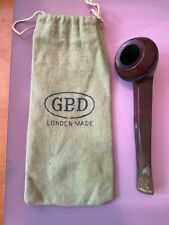
GBD New Standard London Made Smoking Pipe Green Pouch Vintage England J $134.96

GBD New Era Estate Billiard Smooth #883 London England CIRCA 1963 $229.00
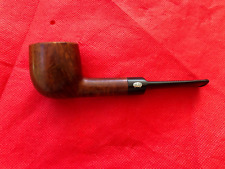
GBD New Standard 9442 Vintage Pot Briar Pipe 70’s Ebonite Stem w/ Logo Made in $50.00
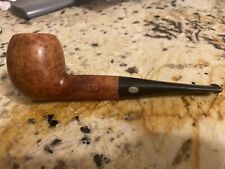
GBD New Standard 347, Smooth Straight Apple Estate Briar $65.00
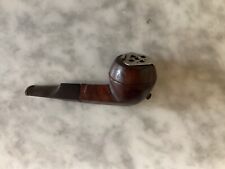
Vintage GBD New Era Pipe $40.00
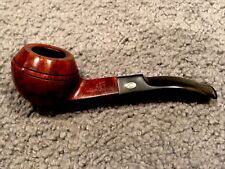
GBD New Standard London England 549 Tobacco Smoking Pipe $124.99
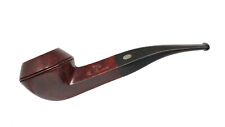
PIPEHUB - NEW GBD New Standard Rhodesian Pipe Old Stock 1970-90's Collection $325.00

GBD 'Freehand' Hand Made Natural Finish London Made Briar Pipe (no.Z) $341.98
|